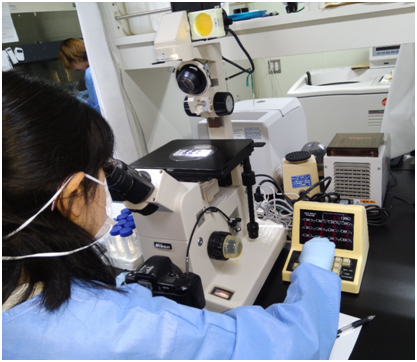Lazzaro, an Italian naturalist criticized John Needham’s work on spontaneous generation. In 1769, he performed series of experiments on the subject matter which showed that heating can prevent the appearance of animalcules in infusion (depending on the degree of heating). Abbe Lazzaro Spallanzani was not satisfied with Needham’s work of only using cork to seal the flask, and thus he hermetically sealed the flask in order to prevent its content from coming into contact with atmospheric air.
He boiled meat and vegetable broth for a very long time in a flask and then sealed the neck of the flask by melting it. As a control, he briefly boiled the contents of some flasks, left some open to the air, and the others partially sealed with corks. After two days, Lazzaro discovered that sealed flask infusions remained barren for long days (and without organisms) while the control flasks were swarming with some organisms.
Abbe Lazzaro Spallanzani concluded that organisms will not appear unless new air entered the flask and come in contact with the meat infusion; and he also commented that external air might be needed to support the growth of animals already present in the medium, a notion which was welcomed by supporters of spontaneous generation.
His works on this area were very good, but nevertheless, faulty experiments continued to be performed, and evidence was gathered in favour of spontaneous generation. John Needham objected to the findings of Lazzaro with the reason that Spallanzanihad destroyed the “vital force of life” with the excessive amounts of heat he applied in his experiments.
References
Barrett J.T (1998). Microbiology and Immunology Concepts. Philadelphia, PA: Lippincott-Raven Publishers. USA.
Beck R.W (2000). A chronology of microbiology in historical context. Washington, D.C.: ASM Press.
Brooks G.F., Butel J.S and Morse S.A (2004). Medical Microbiology, 23rd edition. McGraw Hill Publishers. USA. Pp. 248-260.
Chung K.T, Stevens Jr., S.E and Ferris D.H (1995). A chronology of events and pioneers of microbiology. SIM News, 45(1):3–13.
Talaro, Kathleen P (2005). Foundations in Microbiology. 5th edition. McGraw-Hill Companies Inc., New York, USA.
Wainwright M (2003). An Alternative View of the Early History of Microbiology. Advances in applied microbiology. Advances in Applied Microbiology, 52:333–355.
Willey J.M, Sherwood L.M and Woolverton C.J (2008). Harley and Klein’s Microbiology. 7th ed. McGraw-Hill Higher Education, USA.
Discover more from Microbiology Class
Subscribe to get the latest posts sent to your email.





